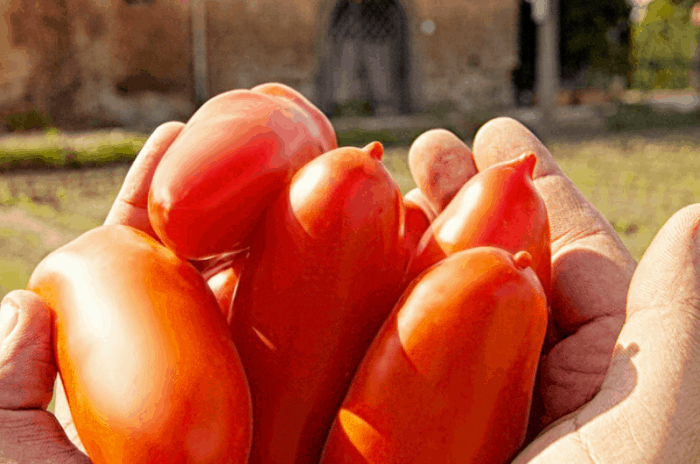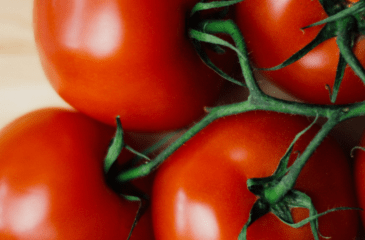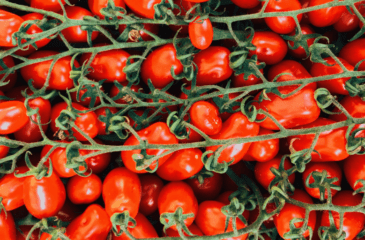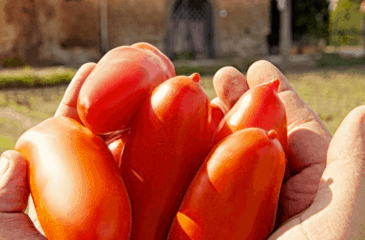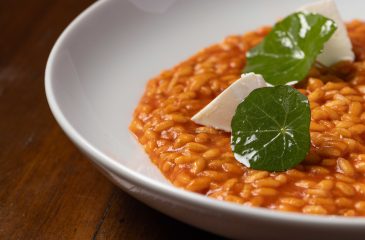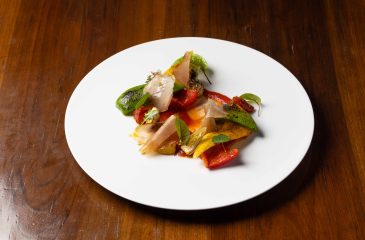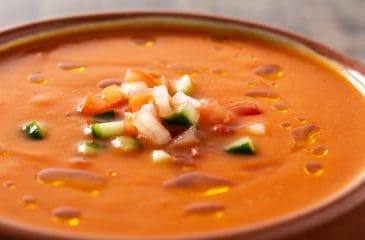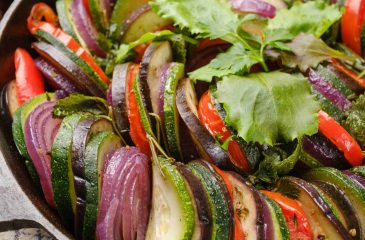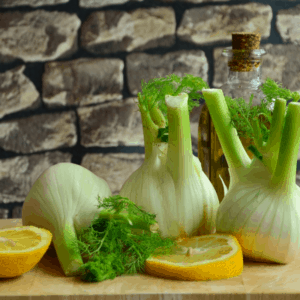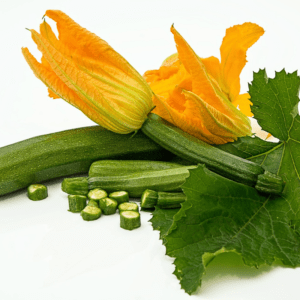The tomato is a berry native to the area of Central America, South America and the southern part of North America.
The Aztecs called it xitomatl, while the term tomatl indicated various similar fruits, usually juicy. It was believed that the tomato had aphrodisiac properties and this is the reason why the French originally called it pomme d’amour, “apple of love”.
It is also said that after its introduction to Europe, Sir Walter Raleigh gave a tomato plant full of its fruits to Queen Elizabeth, baptizing it with the name “apples of love”; likely this is where the Italian word for tomato, pomodoro, came from.
Tomatoes have a high content of vitamin C and beta-carotene, a moderate content of vitamins, provitamins, sugars and minerals, and a modest percentage of proteins and fats. They also contain lycopene, which can help prevent cancer, especially stomach and prostate.
Overall, tomatoes are among the most characteristic vegetables in Mediterranean cuisine, and are produced in different areas of Southern Italy, where their quality has been recognised with European PDO and PGI quality labels.
Pomodorini
Pomodorini are tomato varieties characterised by fruit of small size. There are many varieties, differing in shape and place where they are grown. Thanks to their small size, pomodorini are ideal to eat raw as in salads, or even without anything as a healthy anytime snack.
Cooked, they are delightful: exemplary on pizzas and or tossed with pastas. Adding them when you roast a whole fish brings the flavour of the Mediterranean directly to your table. They are juicy, sweet, and just acidic enough to balance it all; truly delicious.
San Marzano tomatoes
Who can forget San Marzano tomatoes used to make the most famous whole peeled canned tomatoes of all, the San Marzano dell’Agro Sarnese-Nocerino DOP. In Italy, tomatoes labeled as “San Marzano” must adhere to strict DOP (the Italian protected designation of origin) guidelines, which not only refer to the tomato variety but govern where they’re grown and how they’re processed. The flesh of these tomatoes is much thicker with fewer seeds, and the taste is stronger, sweeter, and less acidic.
San Marzano dell’Agro Sarnese-Nocerino DOP tomatoes, Pomodorini di Corbara (Corbarino), and Pomodorino del piennolo del Vesuvio DOP have been designated as the only tomatoes for pizzeria displaying the brand name “Verace Pizza Napoletana” – (Vera Pizza Napoletana).
Pomodorino del Piennolo del Vesuvio DOP
The Pomodorino del Piennolo del Vesuvio DOP is a grape tomato grown in Naples, Italy, in 18 towns around Mount Vesuvius. Their uniqueness is derived from the earth on which they ripen: they grow in the area surrounding Mount Vesuvius, on stratified land created by lava flow millions of years ago. Their unusual and unique name “piennolo” relates to an ancient custom, according to which peasant farmers tied the tomatoes to a piece of thick twine, creating a ‘piennolo’, that is a ‘pendulum’, or a bunch of tomatoes hanging in a vertical position.
These tomatoes are oval or slightly plum shaped fruit with a pointed apex and thick peel. They sold both fresh and stored in the Piennolo form with the PDO quality label.
There are several characteristics that make them so sought-after: an oval shape gently elongated into a heart, a very thick skin, compact flesh with little juice dried by the sun and of a deep red colour. Their intense flavour is sugary tending towards sour, due to the high concentration of sugars and mineral salts they contain.
These tomatoes form the basis of cooking in the Campania region, and are highly appreciated and purchased throughout Italy.
Pomodoro di Pachino IGP
The Pomodoro di Pachino IGP tomatoes from Pachino in Sicily are among the most famous tomatoes produced in Southern Italy and are actually four varieties: Tondo Liscio (bunches or single fruit of a smooth round tomato), Costoluto, Plum and Miniplum, and Cherry tomatoes:
Versatile, easy to cook and rich in flavour, these tomatoes are widely used in numerous recipes.
Pomodoro Ciliegino IGP
The Pomodoro Ciliegino IGP cherry tomato grows in bunches and each bunch can have up to 25 tomatoes. The fruits are round, bright red and fragrant with a sweet et savoury flavour and are delicious eaten raw, in mixed salads, pasta salads or to give flavour to almost anything on the menu. And of course, they are also used cooked in many traditional Mediterranean dishes as well as a topping for pizza.
An ancient Sicilian tradition is sun-drying the tomatoes, either in halves or in a paste, and then preserving them in extra virgin olive oil. They give sun-drenched flavour to appetizers, canapés, in pates, or stuffed into tasty sandwiches.
Pomodoro Costoluto IGP
The Pomodoro Costoluto IGP tomato is a larger tomato that is distinguished by its ribbed appearance. Their round shape is slightly flattened, the skin is bright green with red hues as they ripen. The flesh of the ribbed tomato is red, form, juicy and its flavour is very aromatic and sugary so excellent to be eaten raw but also perfect for sauces, tomato passata, or cut into halves and grilled or baked in the oven.
Pomodoro Plum and Min Plum IGP
The Pomodoro Plum and Min Plum IGP plum tomatoes are varieties of the Pachino tomato with long bunches of tomato fruits like fishbones, and dark red oval fruits. The Mini Plum was first grown in Licata in Sicily. In the winter they are grown in greenhouses and in the spring and summer in open fields. These varieties are perfect chopped and spooned over crunchy bruschetta, tossed into mixed salads, or added to refreshing cool pasta salads in the hot summer months.
Cuore Di Bue tomatoes
The cuore di bue beefsteak tomato is a large, irregular-sized, heart-shaped salad tomato with a smooth and thin skin. Generally, the tomato is harvested when it weighs between 200 and 300 grams, even though the fruit can grow up to almost 800 grams. The flesh is firm with only a few seeds, with a superb flavour.
These tomatoes are ideal for salads or to be eaten raw, and in the summer are often eaten alone, just dressed with salt and extra virgin olive oil, or sliced with a fresh buffalo mozzarella for the classic Italian caprese. For an American BLT (bacon, lettuce and tomato sandwich) these cannot be beaten.



